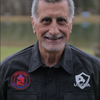
When you make the decision to buy your first firearm for self-defense, there comes a great responsibility to get the proper training in order to be safe and stay on the right side of the law. Over the many years of training students of all levels of experience, I find most individuals want to do the right thing, but then there are others that buy a gun and never train. I tell my students up front in my beginner's class that owning a firearm without the proper training will give them a false sense of security. My recommendation is live fire training, or at the very least, dry fire when they are not able to get to the range as often as they should. It’s not necessary to fire 100+ rounds each time they get out, but they need to practice completely from the holster draw to placing the firearm back in the holster developing memory pathways so it becomes a natural process.
To be a good, prepared defender, it takes much more than learning the safety aspects and proper firearm handling. It takes constant practice to develop the skills to evaluate and make the right decisions in split seconds. Many students never train under some sort of stress and then react to the adrenaline in a negative manner when faced with a life-or-death situation. When practicing, there are natural instinctive moves and reactions that will take over the body and mind. Unless you practice and incorporate these movements and reactions into your regular training, you will fail at the speed and accuracy needed to prevail in the critical defense situation.
When we are faced with a critical defense situation and the adrenaline kicks in, we hesitate and fumble with the firearm, losing the ability to think clearly. Over the many years since police dash cams, great defensive training has emerged. Police were trained one way and when they were in a critical defense situation, they were at a disadvantage. They were always taught that you fight the way you train, but in reality, we should train the way we fight. By this I mean we need to incorporate the natural responses that our body goes through when startled.
One of the most ignored factors of being prepared to defend yourself is what kind of shape you are in. Being capable to endure a stressful situation, you must have the stamina to outlast your opponent. Many defensive situations begin with physical confrontation and using a firearm can and most likely will be secondary and not necessary. Being in good condition, taking the time to do strength training and cardio exercises, is essential to being prepared.
I teach and recommend to my students that learning effective hand-to-hand techniques will increase your odds of surviving an attack. Since many defensive situations begin with physical contact, as I previously stated, and might be sufficient to subdue your attacker without the use of deadly force, you must have the skills to get out of the grasp of the attacker so you can either get away or give you adequate time to get enough distance to access your defensive weapon if necessary. There are many instances where you might not have your firearm on your body due to state or federal laws, and you need to prepare how to protect yourself and your loved ones.
In my Unarmed Defensive Tactics Course, I teach 30 techniques on how to defend yourself against grabs, chokes, and weapons attacks. I teach around five techniques in each category, and I tell my students to choose two or three in each category that they feel most comfortable with and then practice them regularly, so they become second nature and build the necessary pathway of muscle memory. It needs to be an automated response to be most effective.
Interested in taking a firearms class near you? Trainers, register as a shooting instructor today.
